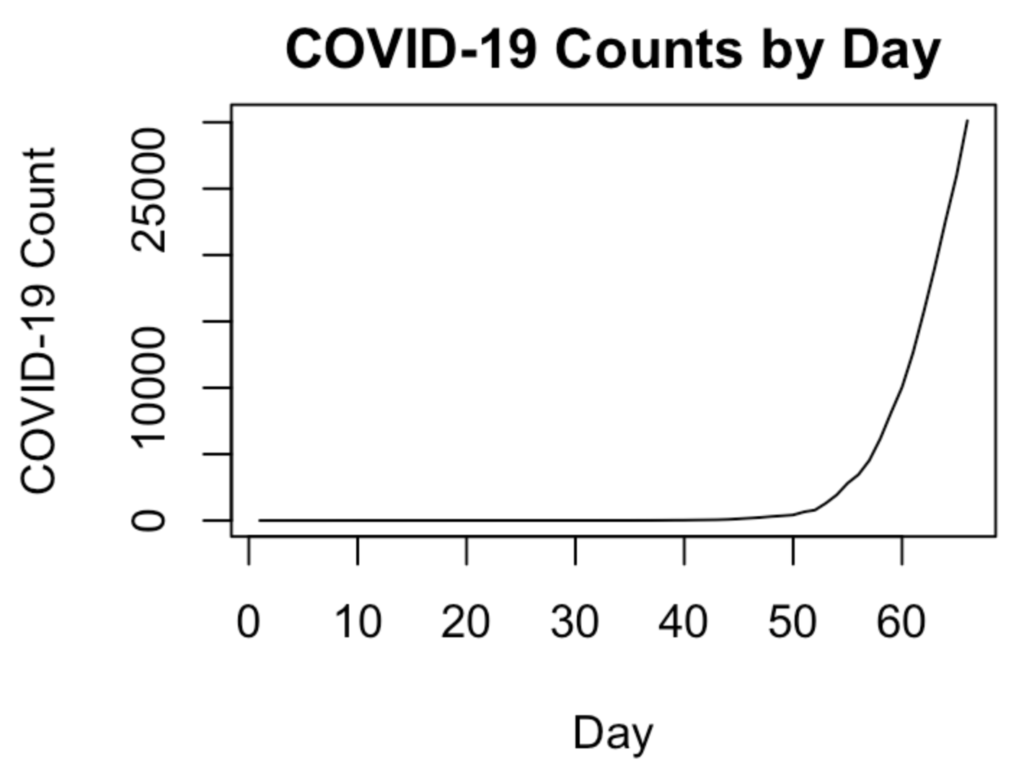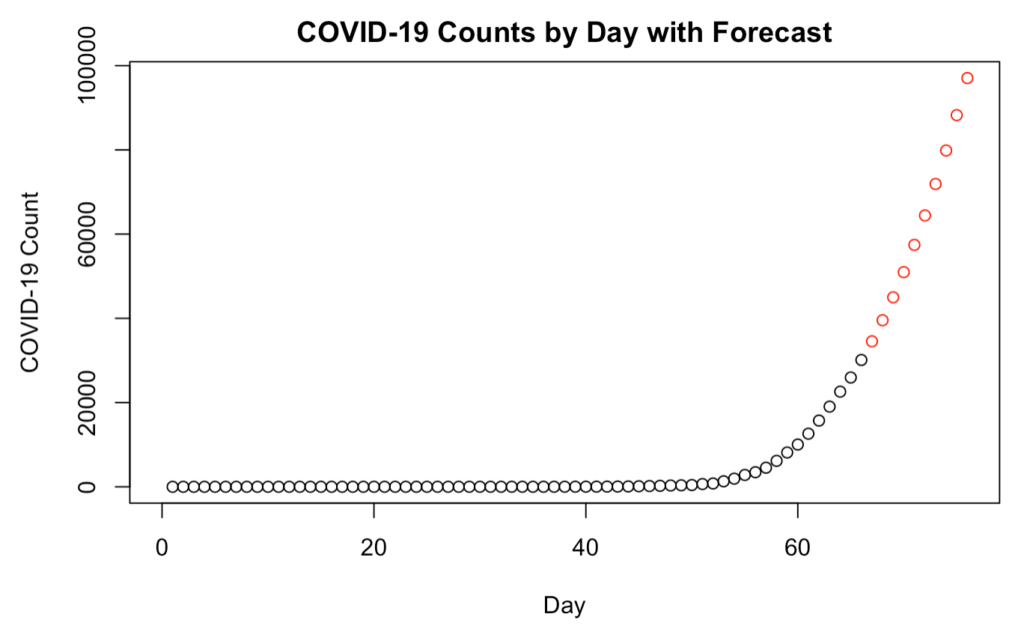*This blog post is part of a school project for a Time Series class. Although it is about a fictional country, the data is real.*
In Timeseria, just 2 months ago most people were making summer plans and looking forward to vacationing. Today, the rapidly increasing spread of COVID-19 is at the forefront of everyone’s concerns. As more people contract the disease and the economy suffers, the main questions weighing on our minds are: how many more people will catch it? When will this end?
In these times of uncertainty, having some idea of how the next few weeks will look are essential for planning. Being able to predict the number of new cases each day will help the government make guidelines, as well as helping the general public understand the reasoning behind the guidelines.

Forecasting Methodology
The number of total COVID-19 counts each day, as shown in Figure 1, is increasing exponentially. To create a prediction model for this curve, we first transform the data into a line so that it is easier to work with. Then, we use a methodology called differencing, because the after applying differencing we end up with data that is in a suitable form that allows for forecasting future data points.
Total Diagnoses in 10 Days is Expected to Be Double the Current Total

Assuming the current situation progresses, we are forecasted to have about 10,000 total diagnoses in 10 days (Figure 2). In the worst case scenario, the graph will level off close to the population of Timeseria, which may happen if we do not take any action. It is already too late to significantly reduce the number of total cases in the next 2 weeks, as that is the length of the incubation period for COVID-19.
Many people feel a sense of hopelessness at seeing these dire projections and do not consider the economic suffering worth slowing down the spread of COVID-19. These frustrations are understandable; people rightfully fear how they will be able to pay their bills. However, we should not even have to ask ourselves to choose between human lives and the economy; the priority should always be to save lives.
Additionally, the situation is not hopeless. We are still far from approaching the worst case scenario, and it is essential that we stop this exponential growth trend. We can flatten the curve, but this is only possible if everyone works together to stay home in order to prevent further spread.